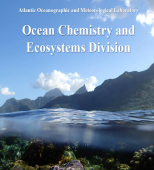Biscayne Bay Turbidity Study

The Biscayne Bay Turbidity study was undertaken to provide information about ambient turbidity levels at three locations in Biscayne Bay. In situ instruments were used which provided data (turbidity, chlorophyll-a, colored dissolved organic matter (CDOM), temperature, salinity and current profiles) at high temporal resolution (15 min). Turbidity measurements were analyzed in conjunction with other environmental factors such as winds, current velocities and phytoplankton populations to examine the effects of these factors on the turbidity levels. A time-lapse camera system mounted atop the Four Season Hotel (240 m high) provided a yearlong series of images of an area of Biscayne Bay. These images showed the development of visible turbidity plumes which then could be compared with data from the in-Situ instruments. Water samples were collected and analyzed for total suspended solids, chlorophyll-a concentrations and for microbial content. High resolution scanning electron microscopy images were generated from the water samples allowing the identification and quantification of phytoplankton and other suspended materials. While this project was specifically conceived to provide information regarding turbidity levels and the variations thereof, the data and analysis may prove useful to others studying the waters of Biscayne Bay.
Click here for the full study report: NOAA Tech Report OAR-AOML-41.pdf
Contact Information:
- Jack Stamates, (NOAA Fed)
Office Phone: 305-361-4317
Fax: 305-361-4447, Email: Jack.Stamates@noaa.gov
